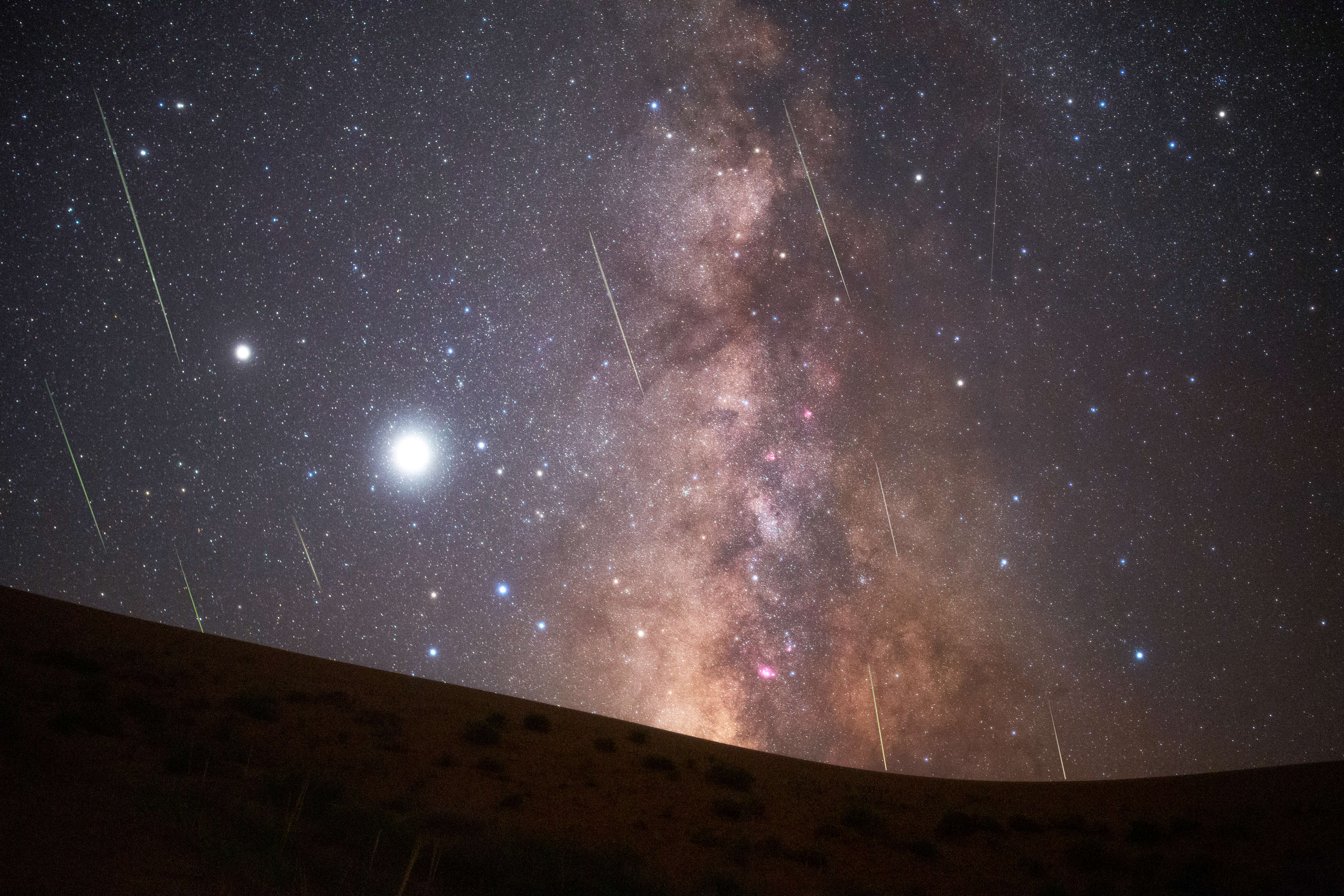Create a free profile to get unlimited access to exclusive videos, sweepstakes, and more!
Everything You Need to Know About the Draconid Meteor Shower
The Draconid meteor shower peaks Monday, October 9. Here's how you can see it!
Normally, if you want to see the stars up close you have to hop a rocket and go to them yourself. The crew of SYFY's The Ark (streaming now on Peacock) risks a years-long trip and their lives just to get to the nearest star, but you’re lucky. You don’t need to do that, because right now, the stars are coming toward you! Shooting stars, that is, in the form of the Draconid meteor shower.
If you’re looking for a way to spend the early autumn evenings, look no further than the skies above your head. The Draconid meteor shower is occurring between October 6 and 10, and will peak on Monday, October 9.
How to See the 2023 Draconid Meteor Shower
They aren’t as active as the famed Perseids meteor shower, which just wrapped up in August. If you missed them, don’t worry. They’ll be back next year around the same time. While the Draconid shower isn’t the flashiest of the bunch, you’ve got a particularly good shot at seeing them this year. The nighttime lighting conditions should be favorable as the Moon wanes, leaving only a small sliver illuminated during the shower’s peak.
RELATED: In 1954, a Woman Was Struck by the Sylacauga Meteorite and Lived
The shower takes its name from the constellation Draco, because that’s where they appear to radiate from. In fact, the meteors are the scattered debris of Comet 21P, also known as Giacobini-Zinner. The Earth passes through the debris field every year in early October and some of that debris inevitably smashes into the planet, burning up in the atmosphere, and giving us a nice little light show.
If you want to find the heart of the shower, you can find Draco by looking for the Big and Little Dippers. Parts of Draco wind between the Dippers, so even if you can’t find its precise location, you’ll be pretty close. If you can’t find the constellation, it’s not a big deal. Meteors originate from that direction, but streak across the sky in all directions as they burn up.
If you’re in the Northern Hemisphere, find a place with clear skies and as much darkness as you can manage, preferably as far away from city lights as possible. Then all you have to do is look up and wait. And if you happen to see a shooting star, spare a wish for the crew of The Ark One. They could sure use it.
Catch the complete first season of The Ark, streaming now on Peacock!



































